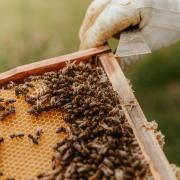
We are unsustainable. As climate change and global warming is getting more and more coverage, we are becoming increasingly aware of the impacts of our actions on the world. We are starting to learn about the environmental damages of our consumerism as well as becoming more concerned about working conditions. Despite this growing consideration, it is still difficult to limit our negative effects and footprints.
This is particularly apparent in the realm of fashion. The rise of fast fashion has been rapid, with 1 billion garments being produced every year as we have doubled the number of clothes we own since 2000. Our increasing rate of consumption supported by the industry is near horrifying, with 92 million tonnes of waste produced in 2015 alone as supported by the 21% growth in demand in the past three years. We are even wasting money due to this, with WRAP UK estimating that there is around £30 billion worth of unworn clothes in our wardrobes. Fast fashion is made to be trendy, accessible and disposable, appealing to the mass markets, but its darker side reveals the exploitation of workers and its environmental impact as it is the second biggest polluter of clean water after agriculture.
Despite this increasing awareness, the most obvious and marketed option available seen by those wanting to be more sustainable is to spend exorbitant amounts on sustainable clothing brands. Frequently fashion websites argue how the cost per wear should be factored but it is a simple fact that the price tags are unaffordable for some. It is understandable as production costs rise exponentially in order to remain sustainable and these items simply must cost more, but it is disparaging all the same. A hopeful thought, however, is that these brands could take the same trajectory as organic food which drastically lowered in price as demand increased, so a move to sustainable fashion may have the same effect.
In light of this, what can be done in order to shop more sustainably? One notable tip is to pay attention to the materials; though natural materials are frequently lauded as being better for the environment, sometimes this is not the case. For example, cotton requires huge amounts of water, fertiliser and chemicals in order to be grown, while even genetically modified cotton to reduce resource consumption can have unforeseen consequences, such as “superweeds.” Instead of cotton, some materials to look out for are linen, lyocell and recycled substances which all have a smaller impact.
Another way to be more sustainable is by looking out for events such as the clothes swap in the ETNA community centre in Twickenham that is organised by the Environment Trust who are also concerned about the impact of clothing. Sophie Norden, the fundraising and partnership manager, said that they "hope to help people make this change" in becoming more sustainable. It has recently begun to be held regularly, the first having occurred this August, the latest having been on the 19th of October. This is one way to refresh your wardrobe with only the ticket cost of £8 to be factored in, as you can swap old clothes destined for the landfills for new clothes without the same impact on the environment. Its impact is even beyond just sustainability, with the £500 being raised in the most recent swap in part as well as the leftover clothing being donated to local charities. The event was visibly very successful with one lady leaving with a small suitcase, and upon enquiry, said she had found 20 pieces of clothing. The next scheduled clothes swap will be this winter which will hopefully have the same success.
There are a range of options that allow us to reduce our carbon footprint, even if they do require more effort that a few quick clicks on a website. They are all completely worth it, however, as without us as the consumers making changes and demands, the current fashion industry is predicted to use up a quarter of the world’s carbon budget by 2050 as stated by the UN.
by Charlotte Liu





























